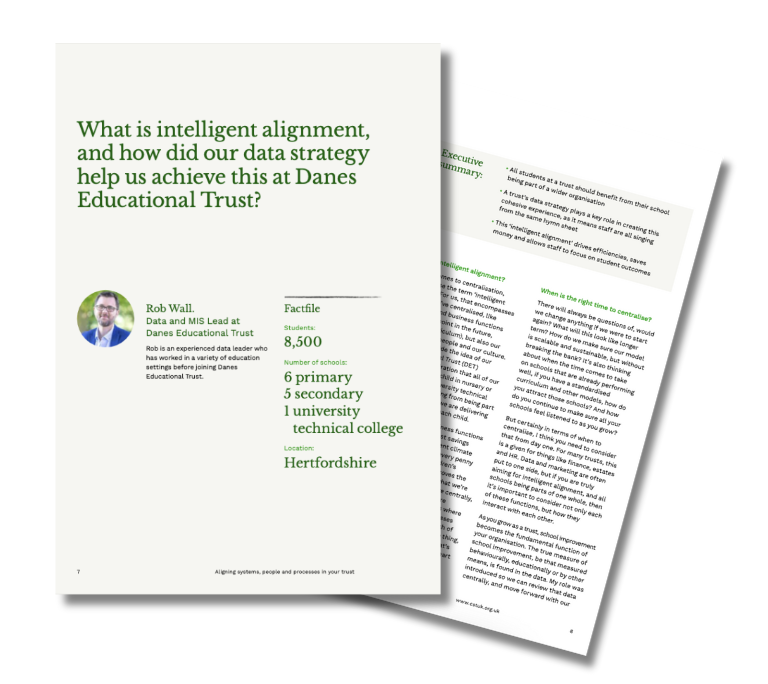Aligning systems, people and processes in your trust
Register for your free ebook
*At Arbor, we use the contact information you provide to us to contact you about our products and services. You can unsubscribe from these emails at any time. For information on how to unsubscribe, as well as our privacy practices and commitment to protecting your privacy, take a look at our Privacy Policy.
How to get your copy
Fill in your details in the form to the right and we'll email you a PDF copy of the eBook.
Once you're done reading, let us know what you think on X (@arboredu) and LinkedIn (Arbor Education).

About the book
In recent times, the definition of ‘centralisation’ has become far more malleable, as trust leaders recognise that varying levels of alignment work for their organisations. In fact, by using the lens of “alignment”, it becomes easier to see that a centralised trust isn’t the same as having autonomy-less schools. Instead, alignment is a way of thinking about joining up people, processes and systems, so that MATs can work as one organisation, not many schools. This is all the more important given the pressures on MATs to continue to grow, drive school improvement, and create greater efficiencies. In short, a degree of centralisation has become necessary for growing trusts.
But knowing that alignment might look different from trust to trust, many MAT leaders are asking the same questions. When is the best time to get started? Where do you begin - with systems, people, or processes? And, most importantly, how do you do it well?
There are no one-size-fits all answers to these questions, so we sat down with four MAT leaders to get their different perspectives. In this short book, you’ll hear about their experiences and how they approached alignment to fit their unique contexts.

